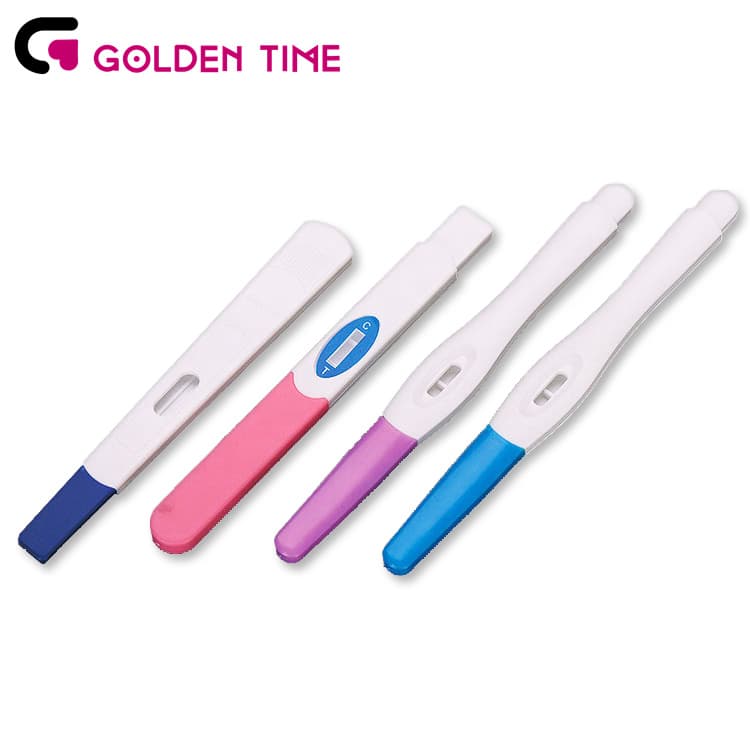Oct . 15, 2024 08:58 Back to list
HCG Test Strips for Accurate Home Pregnancy Detection and Monitoring
Understanding the HCG Test Paper Strip A Guide for Expectant Mothers
The HCG (Human Chorionic Gonadotropin) test paper strip has become an essential tool for many women who suspect they might be pregnant. This simple yet effective method helps in detecting the presence of HCG in a woman’s urine, a hormone produced during pregnancy. The ease of use and accessibility of HCG test strips have contributed significantly to their popularity, making them a favored choice for home pregnancy testing.
How HCG Test Strips Work
HCG is a hormone released by the developing placenta shortly after a fertilized egg implants into the uterus. The hormone can be detected in urine as early as a week after a missed period, making HCG test strips a reliable option for early pregnancy detection. The HCG test strips work on the principle of immunoassay. When urine is placed on the strip, it travels along a nitrocellulose membrane that contains antibodies specifically designed to bind to HCG.
If HCG is present in the urine, it will bind to these antibodies, leading to a visual change on the strip—usually a colored line indicating a positive result. Most HCG test strips will typically include a control line that confirms the test is working correctly. A single line may indicate a negative result, while the presence of two lines signifies a positive result.
Advantages of Using HCG Test Strips
One of the primary advantages of HCG test strips is their convenience. They are compact, easy to use, and can be performed in the privacy of one’s home. Additionally, most HCG test strips are affordable and readily available at pharmacies, making them accessible to a wide range of consumers.
Moreover, HCG test strips provide quick results—usually within a few minutes—which can be reassuring for those eager to know about a potential pregnancy. The accuracy of these tests has also improved over time, with many high-quality brands offering over 99% accuracy when used correctly.
hcg test paper strip

Limitations to Consider
While HCG test strips are highly effective, there are some limitations to be aware of. False negatives can occur, especially if the test is taken too early in the pregnancy when HCG levels may not be sufficiently high to detect. Additionally, dilution of urine, such as when consuming excessive fluids before testing, may also lead to inaccurate results.
In some cases, expired tests or improperly stored strips can yield unreliable results. Therefore, following the manufacturer’s instructions is crucial for obtaining accurate results.
Confirming Pregnancy
For women who receive a positive result from an HCG test strip, it is advisable to confirm the pregnancy with a healthcare professional. A blood test can provide more accurate HCG levels, and an ultrasound can confirm the viability of the pregnancy. It is essential to start prenatal care early to ensure both maternal and fetal health during pregnancy.
Conclusion
HCG test paper strips have revolutionized how women can detect pregnancy, offering a straightforward and reliable method for early testing. While they carry numerous advantages, including convenience and accuracy, it is essential for users to be aware of their limitations. For anyone suspecting pregnancy, HCG test strips represent a critical first step on the path to confirmation and prenatal care. Always remember to consult with a healthcare provider following a positive result to ensure a healthy pregnancy journey.
-
Malaria Pf Ag Rapid Test Kit - Quick & Accurate Detection
NewsAug.11,2025
-
Accurate Cardiac Marker CK-MB Rapid Test for Quick Results
NewsAug.10,2025
-
Premium Empty ABS Plastic Cassette for Test Strips
NewsAug.09,2025
-
Sterile Urine Cup: Accurate Specimen Collection for Labs & Home
NewsAug.08,2025
-
Malaria Pf/Pan Ag Rapid Test Kit for Fast, Accurate Diagnosis
NewsAug.07,2025
-
Rapid Canine Corona Test: Fast & Accurate Results
NewsAug.06,2025

